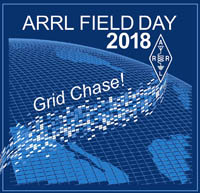
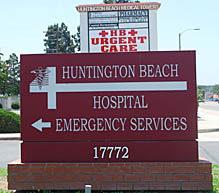
Amateur Radio Field Day Weekend
At Huntington Beach Hospital (HBH)
Always the fourth weekend of June
Photos by Joe Moell KØOV
except as noted
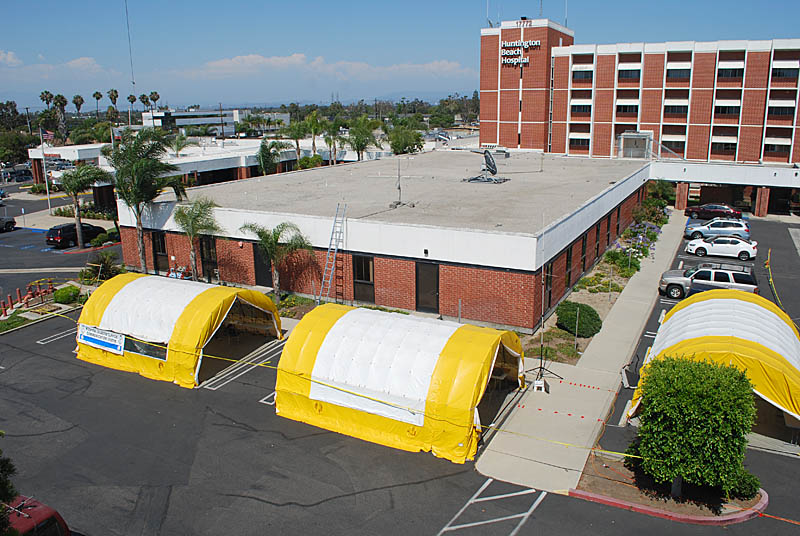
2018 was the seventeenth year of HDSCS Field Day (FD) at Huntington Beach Hospital (HBH), one of our supported facilities. Our main stations are set up on tables in yellow "surge capacity" tents, which Orange County hospitals have ready for deployment when they need additional space for patient care during pandemics, etc. There are lights for overnight operation and cots for those who need some shuteye. The hospital also provides sandwiches, snacks, sodas and water.
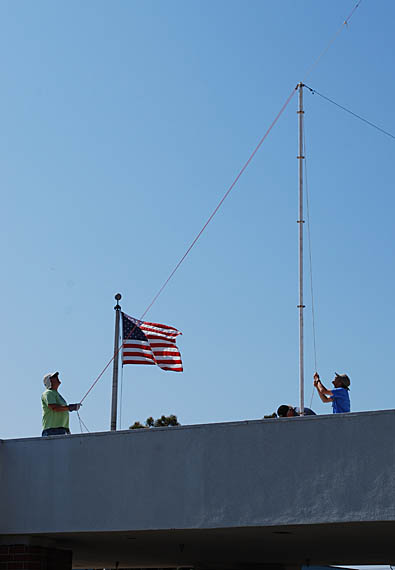
Setup begins on Friday afternoon. Field Day requires lots of wires for power and antennas. Getting those wires in place is one of the first jobs. Tom Gaccione WB2LRH and Greg Landers KE6DAN (on the portico roof) are attaching two antennas to the hospital's holiday decoration mast.
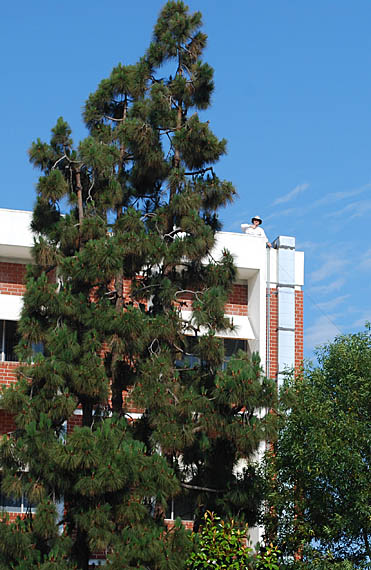
One end of a G5RV wire antenna goes from the main hospital tower to an adjacent medical building. Dave Reinhard WW6I is attaching one end.
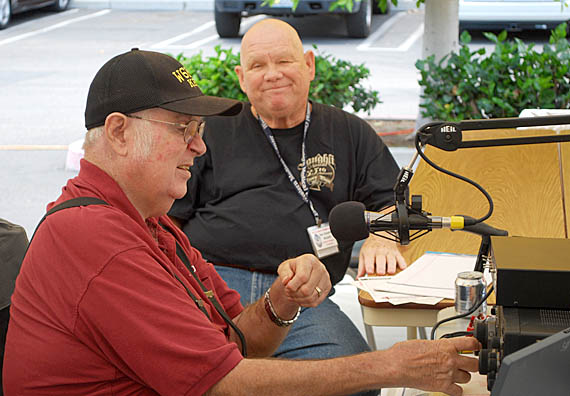
In accordance with nationwide rules, on-air operations commence at 11 AM PDST on Saturday. At HF Station #2 is Ken Simpson W6KOS (nearest camera). Visiting him and doing some logging is Jon Schaffer W6UFS. Ken also leads the team that gives Amateur Radio exams on Saturday afternoon.
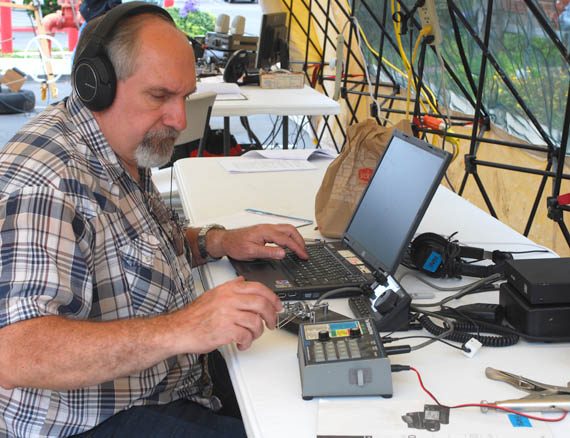
To correctly log and score hundreds of contacts, it takes a networked computer at each station. Computers and network hardware are provided by Rick Soikkeli N6NH, who is shown here operating CW (Morse Code) at HF Station #1. He enters each station that he works into the computer program.
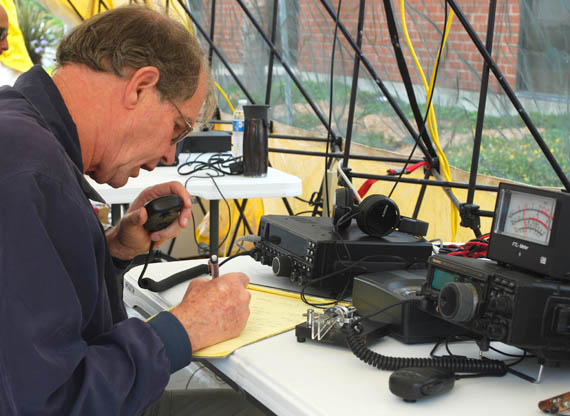
We set up a "bonus" station on the VHF/UHF bands. Hoping that the six-meter band will open to the north and east is Bob Houghton AD6QF.
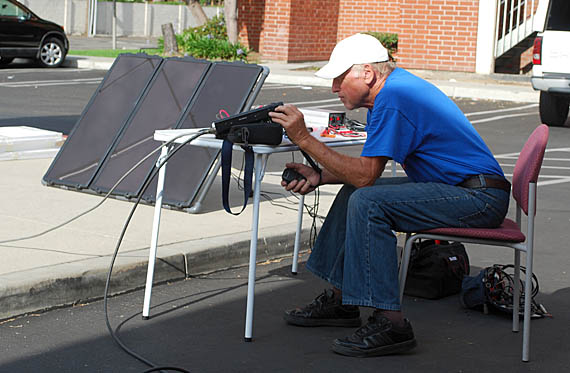
Tom Hall N6DGK operates a solar-powered setup. Field Day rules provide bonus points for contacts made via "natural power" such as solar or wind.
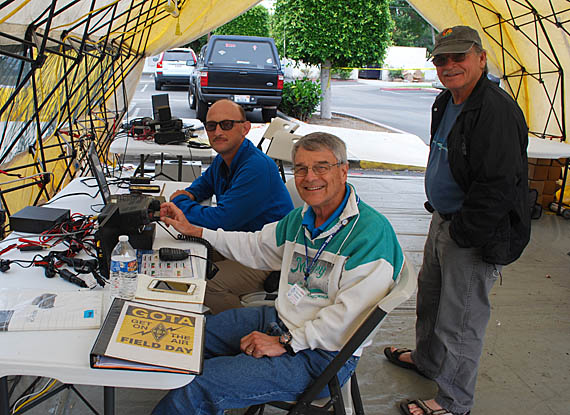
Field Day rules encourage a "Get On The Air" (GOTA) station for operation by guests, beginners and hams who don't regularly operate long-distance ham frequencies. Operating the GOTA station is Greg Landers KE6DAN, watched by Justin Miller KI6AFZ and Jim Whited AI6EZ.
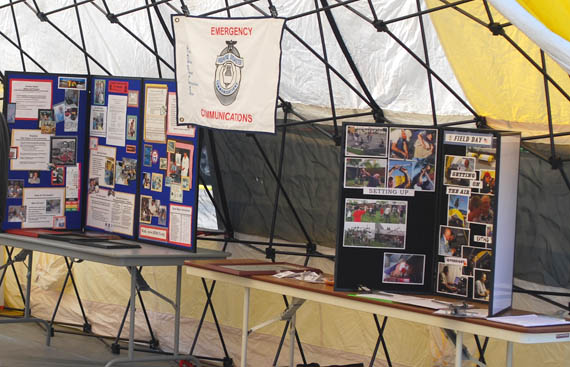
Numerous visitors drop by throughout the day to see our operations. Our displays show them what FD and HDSCS are all about.
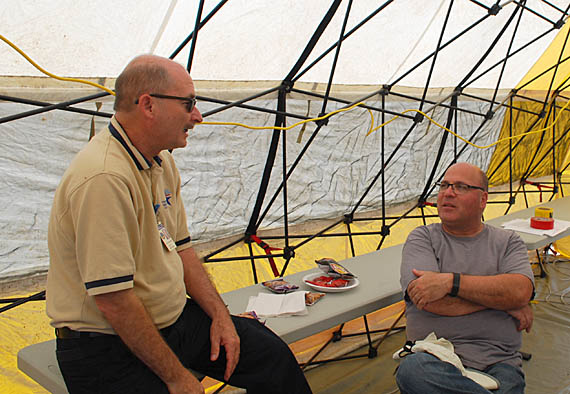
A frequent visitor is Mike Stainkraus N6PTN, the Medical Disaster Management Coordinator of Orange County Emergency Medical Services Agency. He's talking to HDSCS Field Day Chair Tom Gaccione WB2LRH.
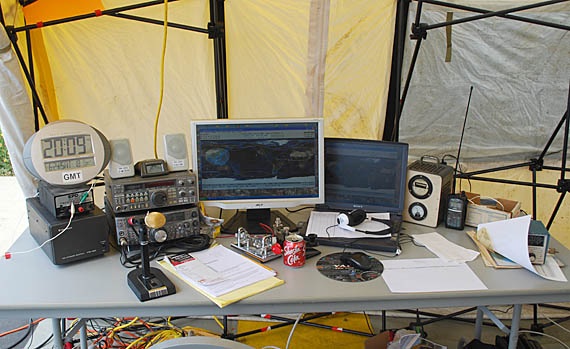
This station is for making contacts through orbiting satellites that have been built by ham radio operators. A computer shows the position of each satellite and it adjusts the transceiver to correct for Doppler shift on the uplink and downlink signals. We usually make contacts on eight different satellites. Each satellite passes over about five times during the contest and passes last less than 20 minutes.

Satellite operations always attract lots of attention. The long beam antennas of the satellite station are on a special portable azimuth/elevation mount held upright by an old tire. Tom Gaccione WB2LRH (at right) is the primary antenna operator, aiming the antenna at the satellites passing overhead. Here Tom is teaching Gracelee Dowler how to determine where to aim the antennas.
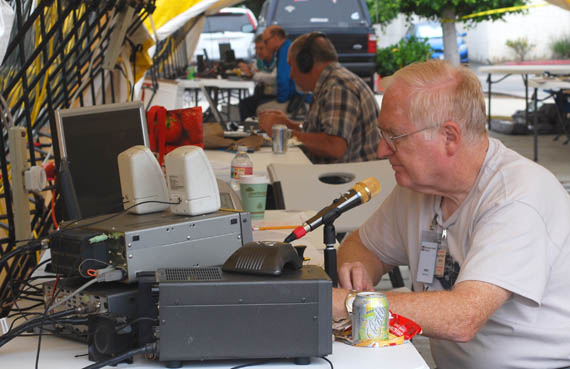
As the antenna operators keep pointed at the satellite, Joe Moell KØOV makes contacts.
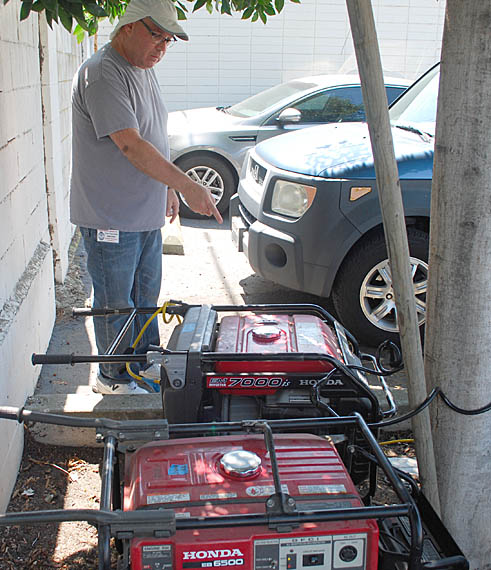
Huntington Beach Hospital takes advantage of Field Day to test its two portable generators. We place them next to the south wall of the facility to reduce noise. Tom Gaccione WB2LRH is checking the fuel level.
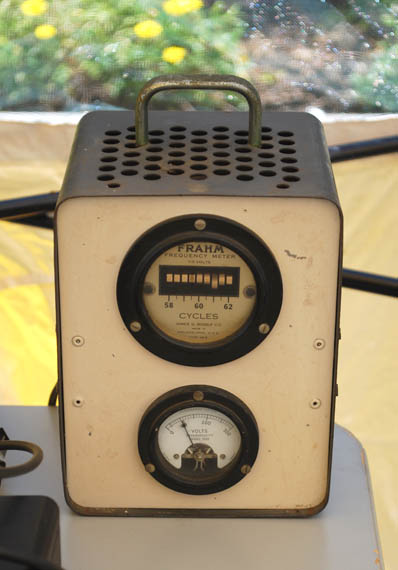
It looks like this generator is working just fine!

FD groups can get extra points by copying a lengthy message from ARRL Headquarters during the FD period. Rick Soikkeli is displaying the message on a computer using a digital mode called PSK-31.
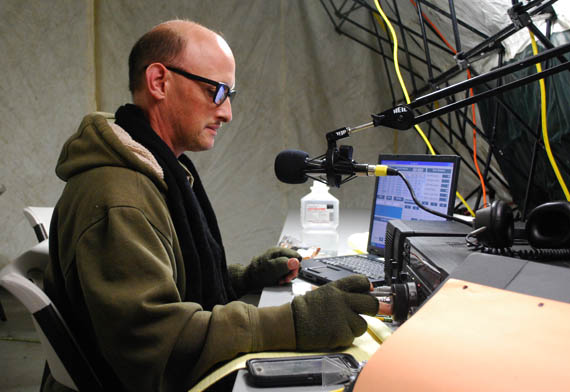
Justin Miller operates HF station #2 into the late evening hours.
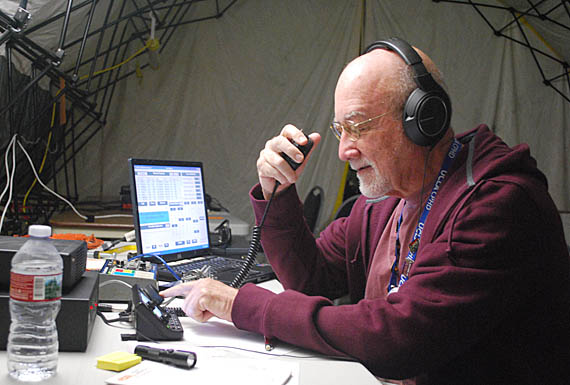
Operating into the wee hours at HF Station #2 is Sam Stratton W5AGX. Joe Moell KØOV (not pictured) took over for him in the middle of the night, operating CW. In the Field Day rules, CW contacts in have twice the point value of voice contacts.
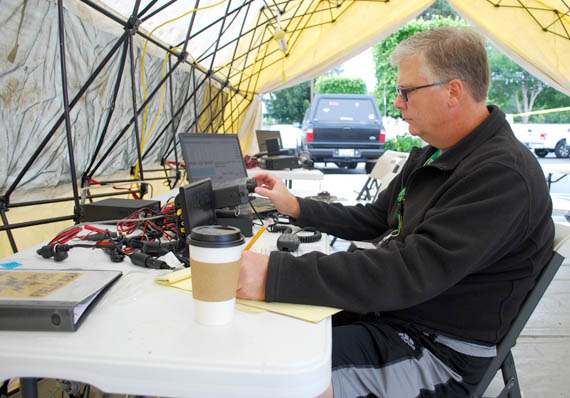
On Sunday morning, the GOTA station is operated by Ed Dowler KK6KMM. Operations continue until 11 AM, the end of the 24-hour period.
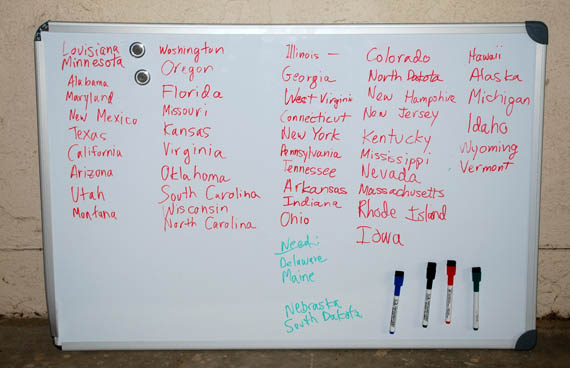
We usually keep track of the states and provinces that we contact on a large whiteboard.

Back to the HDSCS News Notes page
Back to the HDSCS home page
This page updated 28 June 2018






















